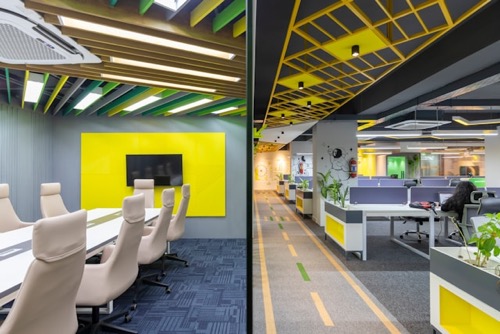So the return-to-office mandate is in place. People are coming in. Desks are being claimed. Coffee machines are back in use. But here's the thing HR and workplace experience teams know better than anyone: just because people are in the office doesn’t mean they’re comfortable being there.

This next chapter is less about enforcing attendance and more about shaping an experience worth showing up for. You’re not just managing a seating chart. You’re managing uncertainty, social energy, friction, and a hundred invisible emotional checklists.
Here’s how to turn those awkward first few weeks into a smooth, even enjoyable, transition.
Start with Autonomy, Not Attendance
Fun fact: Many
Gen Z workers started their careers remotely and have had little to no in-person office experience. Some were in high school or university when the world went virtual. Crazy, right? Gen Z is
actually leading the return-to-office charge, averaging three days a week on-site, according to JLL. They want the best of both worlds: face time
and remote time.
Give people a reason to show up - on their own terms. Because the reality is, no one likes being told where to work. But they will come in if they know their team will be there, if there’s a purpose to the day, or if the space makes the work easier.
- Let teams co-create their schedules. Instead of blanket rules, encourage team-level norms. This gives employees ownership and clarity.
- Surface the "who's in" intel. Visibility is everything. The more people know, the easier it is to plan meaningful in-office time.
- Connect the why. Whether it's access to mentorship, better collaboration, or just getting out of the house, tie office days to actual benefits, not obligations.
Flexibility = a retention tool. People are far more likely to leave a company if they feel forced into rigid schedules that don’t fit their lives. In fact,
48% of workers say they would consider quitting if forced into full-time office attendance. That number jumps to 58% for women, compared to 42% for men.
Eliminate the Friction Nobody Talks About
You’ve got them in the building—great. Now don’t lose them to bad systems.
- Fix the basics. Room panels should reflect real-time bookings. Desk reservations shouldn’t be a guessing game. Wi-fi should be working smoothly.
- Invest in wayfinding. Whether it’s your first day or your first time on the third floor, people appreciate knowing where to go.
- Remove friction. There is no need to ask the receptionist to book a room for you. Your people should be able to schedule a room in a few seconds.
CBRE reports that 63% of employees have been unable to find a meeting room despite seeing open ones. That’s not a design issue. It’s a systems fail.
Design for How People Work
Today’s office shouldn’t feel like a throwback to 2019. It should meet people where they are now and how they get work done.
- Variety wins. Quiet zones. Collaboration hubs. Private nooks. Mix it up.
- Keep it flexible. Modular furniture, movable whiteboards, and reservable everything give teams the freedom to adapt.
- Listen to the data. Sensors and booking analytics show what’s working and what’s not. Use it.
Workplace design isn’t about fitting more people into fewer square feet. It’s about building spaces that support energy, focus, and flow.
Prioritise People, Not Policy
Your space can be beautiful, your tech flawless, and your snacks on point, but if you prioritise the return-to-office mandate over your employees' readiness to come back, it all falls flat.
You risk losing the trust and engagement that make a workplace thrive. People want to feel like they matter more than a policy. They want to be seen not just as headcount, but as humans with different rhythms, needs, and boundaries.
So if you’re trying to make the return to office feel a little more human, think about it like this:
- Normalise the nerves. Social anxiety, burnout, and change fatigue—these are real. Create space to talk about it (tap into mental health services)
- Ditch the pressure. Make social events optional, inclusive, and low-key.
- Make the office worth the trip. Highlight what they can’t get at home: face time with leaders, faster decisions, spontaneous chats, or even just a better space to focus.
Your RTO Readiness Checklist
Because the difference between a good return and a painful one is usually the little things.
☑️ Reliable tech (Wi-Fi, video conference tech, room booking systems)
☑️ Clear visibility into who’s in when
☑️ Purpose-driven space variety (quiet, social, private)
☑️ Clean, comfortable, stocked environment
☑️ Clear, consistent communication
☑️ An HR open line for ongoing feedback
Strategy Over Space
A successful return strategy centres on emotion as much as logistics. It’s about helping people reconnect on their own terms, building in flexibility, and showing that their personal work styles and preferences aren’t just tolerated but respected.
Ready to make your RTO strategy work for your people?
Door Tablet helps you simplify bookings, reduce first-day friction, and create a workplace experience worth showing up for.